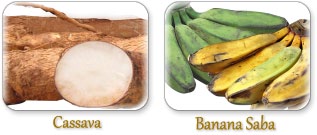Food security has become an essential objective in the Philippine agricultural system. This poses a challenge to the statistical system to become an indispensable partner in attaining and maintaining food security. Since the country’s statistics on food security are widely dispersed, are characterized by data gaps, are not readily available or accessible, are mostly outdated and are inadequate inputs to the decision-making process by the government and other stakeholders, there is a need for a well-organized food security information system with well-defined concepts that will address the data requirements of policy and decision makers. In response to this, the Philippine Food Security Information System (PhilFSIS) was proposed to be established.
 Food Agricultural Organization (FAO) project TCP/PHI/3401 provided for the establishment of the Food Security Information System (PhilFSIS) in the Philippines at the Bureau of Agricultural Statistics (BAS). The project was approved in March 2012 and was formally launched on July 31, 2012.
Food Agricultural Organization (FAO) project TCP/PHI/3401 provided for the establishment of the Food Security Information System (PhilFSIS) in the Philippines at the Bureau of Agricultural Statistics (BAS). The project was approved in March 2012 and was formally launched on July 31, 2012.
Inspired after the ASEAN Food Security Information System (AFSIS), the PhilFSIS is envisioned as a one-stop shop containing relevant, timely, comprehensive, user-friendly, and accessible data affecting food security. It is a web-based information system that aims to enhance food security planning, implementation and evaluation through improved organization, analysis and dissemination of relevant information.
Commodity Coverage
Commodities covered by PhilFSIS fall under three (3) groups: Crops, Livestock and Poultry, and Fisheries.
Among the crop commodities are rice, corn, sweet potato, cassava, and banana (saba). These were selected since they are part of the priority crops under the Food Staples Sufficiency Program (FSSP) of the Department of Agriculture (DA). Rice is the main staple food while corn, cassava, sweet potato and banana (saba) are traditionally part of the meal in the rural areas of Visayas and Mindanao.


Commodities under livestock and poultry and fisheries sectors were selected based on the inputs provided by concerned agencies during the PhilFSIS’ User-Producer Forum. Hog, chicken, chicken egg, tilapia and milkfish are perceived as being the most common commodities purchased by wage earners.

